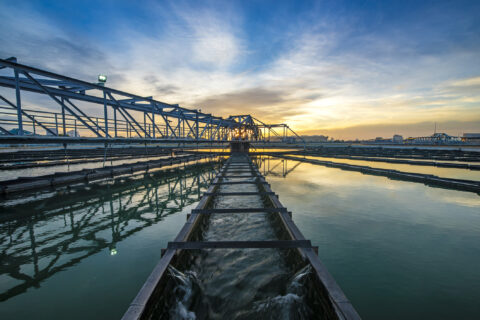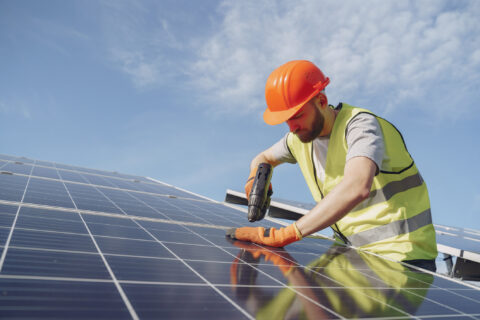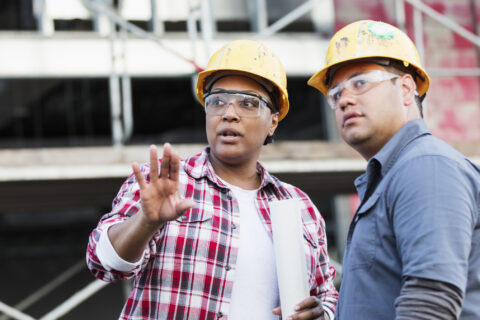2022 was a historic year for cities, towns and villages, with direct federal funding coming to local governments to build and strengthen infrastructure projects around the country. As local leaders look ahead to 2023, we want to share some of the top takeaways on infrastructure, one of local governments’ top priorities consistently year-over-year.
Whether transportation, water or broadband, infrastructure is on communities’ to-do list every year. What made 2022 different was the level of support from Congress through the Bipartisan Infrastructure Law (BIL) and the Inflation Reduction Act (IRA). Now is the time to consider your local government’s strategy and partnerships. Work smart by strategically considering which grants you choose to go after, and how you can collaborate with other partners. Many grants allow for team proposals with local and regional partners, which can give smaller communities support and clarity on how to move forward.
Here are a few infrastructure takeaways every city, no matter the size, can use to go after federal grants in 2023:
1. Bipartisan Infrastructure Law transportation grants are rolling out with new competitions almost every month that cities can apply for, and states are also receiving large increases for transportation. Consider if you should apply directly or partner to access funds.
Every month of 2022, the U.S. Department of Transportation rolled out Bipartisan Infrastructure Law grant announcements, and cities are eligible for more transportation grants than ever before. We expect them to keep up the pace with both new and reoccurring funding opportunities like the Safe Streets and Roads for All (SS4A) grants – a new grant opportunity just for local governments. Here are some of the latest transportation announcements local governments can take advantage of:
- $1.5 billion in Rebuilding American Infrastructure with Sustainability and Equity (RAISE) funds to complete a wide range of transportation infrastructure projects; applications due February 28, 2023.
- The long-awaited Partnership for Intercity Passenger Rail Grant Program, which will to expand and modernize intercity passenger rail nationwide. Applications are due March 7, 2023.
- States receive $60 billion for roads, bridges and more for use in 2023 through 12 formula allocations from USDOT.
We look forward to seeing the new SS4A grants, PROTECT grants, and more in 2023. Also, cities have been interested in new opportunities to include key workforce training and local hire in several transportation grants.
2. State-local partnership remains important with the largest water and wastewater infrastructure programs continuing to flow through the states.
Communities across the country face challenges with their water systems. Most federal funding programs for water infrastructure go to states and then local governments, so local leaders interested in these programs should follow their state’s announcements.
Most notably, the Drinking Water and Clean Water State Revolving Funds are key programs operated in each state. These provides grants and loans to communities and water utilities to upgrade and improve drinking water, wastewater and stormwater infrastructure, including specific funding for lead pipe replacement and addressing emerging contaminants. This EPA memo to states details requirements and flexibilities for states to award the funding to local governments, and local leaders should become familiar with this document.
3. Local governments can access some environmental and broadband federal infrastructure programs directly in addition to pursuing state programs.
Local governments with essential infrastructure needs often face challenges in finding funding. Direct federal programs offer an opportunity to ask for what your community needs directly in addition to seeking state funds. A few of the programs popular among cities in the environmental and broadband areas are:
- Brownfields Program. Provides grants and technical assistance to communities to assess, safely clean up and sustainably reuse contaminated properties.
- Energy Efficiency and Conservation Block Grant Program. Helps communities implement strategies to reduce fossil fuel emissions, implement renewable energy projects, and improve energy efficiency in the transportation, building, and other appropriate sectors. Applications for formula grants are expected to open in January.
- Broadband Equity, Access, and Deployment (BEAD) Program. Helps expand high-speed internet access by funding planning, infrastructure deployment and adoption programs.
4. Cities can use programs and tax savings in the Inflation Reduction Act to work for their residents.
This year, communities saw inflation concerns as the economy adjusted to prior supply chain disruptions from the worldwide pandemic, and Congress responded with the Inflation Reduction Act (IRA). With a mix of federal funding and tax credits, the law includes a new mechanism for tax-exempt entities, such as cities, towns and villages, to take advantage of many of the new clean energy tax incentives included in the law. Historically, only taxpaying entities were able to take advantage of renewable energy tax incentives, but this legislation levels the playing field between taxpaying and non-taxpaying entities and opens the door for local governments to access these incentives.
On December 15, the White House launched a new IRA guidebook for cities – Building a Clean Energy Economy: A Guidebook to the Inflation Reduction Act’s Investments in Clean Energy and Climate Action, which provides clear descriptions of the law’s tax incentives and funding programs to build a clean energy economy, lower energy costs, tackle climate change, and reduce harmful pollution. The guidebook can help local leaders better understand how they can benefit from these investments and unlock the full potential of the law. It walks through the law program-by-program and provides background on each program’s purpose, eligibility requirements, period of availability, and other key details.
5. Training programs are available to cities and towns of all sizes seeking to go after infrastructure funds.
NLC knows how daunting it can be for small and medium-sized cities to go after federal grants. Starting in the new year, the new Local Infrastructure Hub will host a series of bootcamps covering the Safe Streets and Roads for All (SS4A) program, local electric vehicle charging through community grants, brownfields program grants and the Energy Efficiency and Conservation Block Grant (EECBG) program. Keep an eye out for future bootcamp dates and if you have questions, please reach out to the Hub team.
Throughout 2022, NLC wrote over 50 explainers on key part of the Bipartisan Infrastructure Law and launched the Ready to Rebuild webinar series to bring experts and federal leaders to speak to local leaders directly about new infrastructure opportunities. Additionally, NLC continues to publish key updates on our website to help local leaders find and apply for infrastructure programs including:
- Best Infrastructure Grants for Small Cities
- 10 Ways to Make Your Local Match for Federal Projects
- Affordable Connectivity Program: What You Need to Know
6. Infrastructure projects are a marathon with lots of small sprints along the way. If your city wants a piece of the federal infrastructure funding for a project, 2022 and 2023 are the years to get your plans and applications in order.
Now is the time to ensure your city is picking the programs that address your local concerns. The White House’s “Building a Better America” Infrastructure Guidebook is a great tool to start finding the right program for your project. Sign up for updates and information on the latest rounds of Local Infrastructure Hub bootcamps here and look out for other trainings and webinars from federal agencies and NLC.
Stay Informed
Sign up for our Federal Advocacy Update Newsletter to stay up to date on the latest federal opportunities for your city, town or village.









